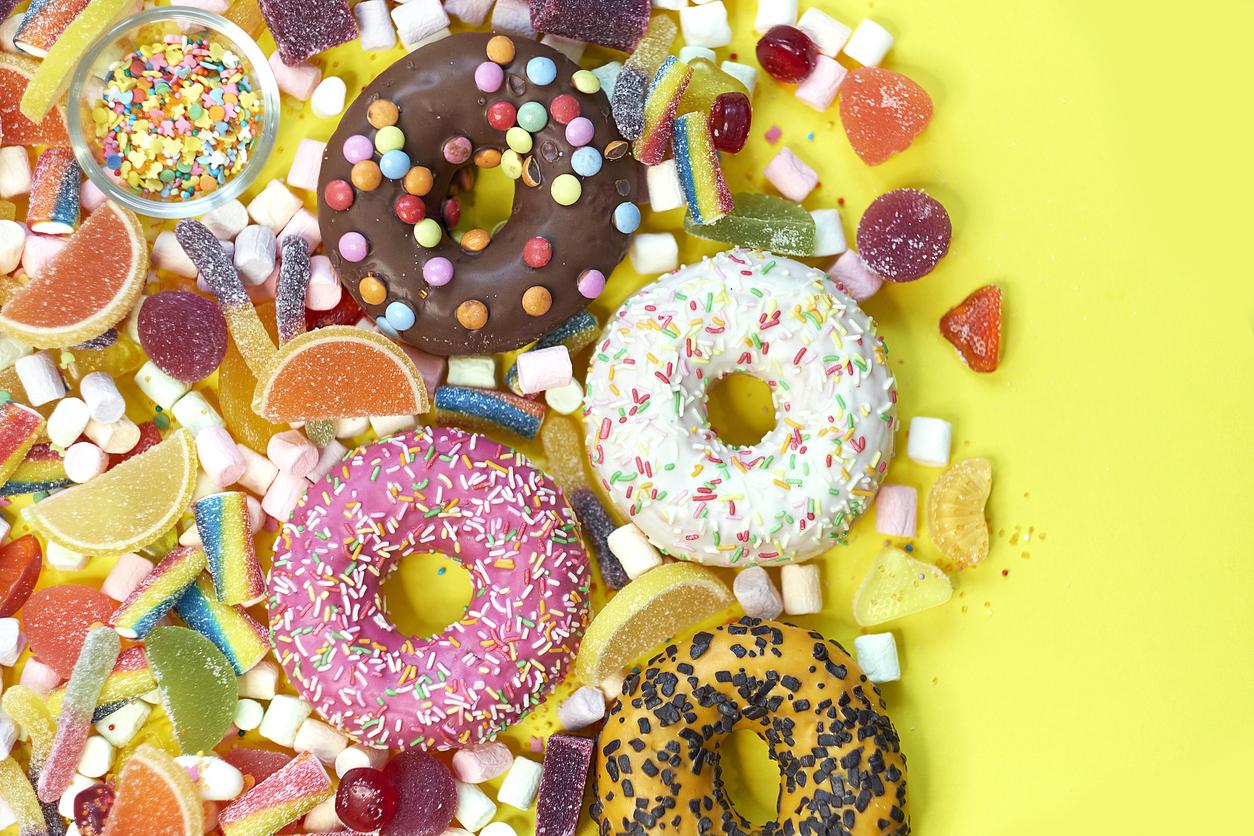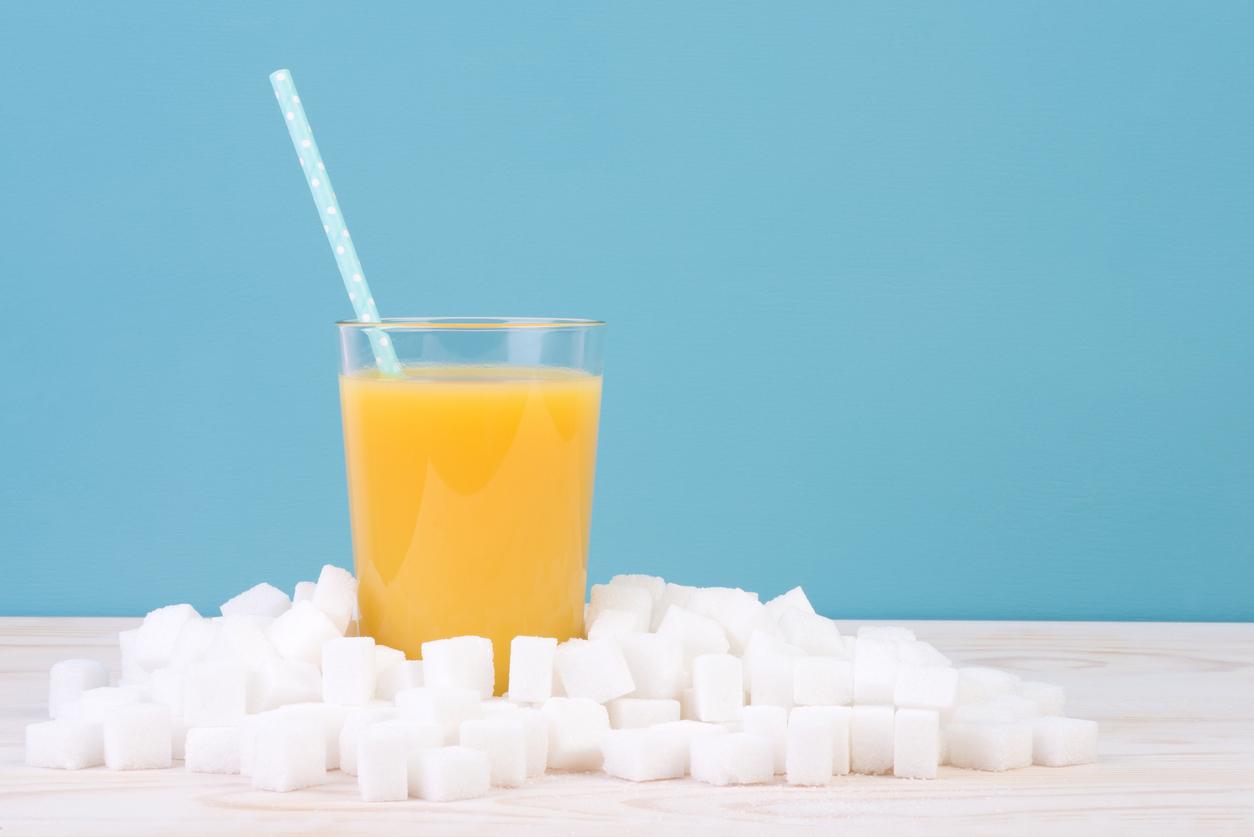Our body is programmed to like sugar, manufacturers know it!
“The whole mouth, including the palate, is crazy about sugar. Special receptors are present in the 10,000 taste buds in the mouth and they are all connected to the parts of the brain responsible for pleasure, ”recalls Micheal Moss. But in reality it is our whole body that is sensitive to this foodstuff. The esophagus, stomach and pancreas have taste receptors that react to sugar and alter our hunger. Food companies have understood this well and the sugar has become one of the flagship foods of industrial food. “Humans love sweet. And for all the ingredients, there is an optimum concentration that ensures maximum pleasure. This level is the point of bliss, ”explains Michael Moss. The challenge for companies is to find it for each product and insidiously create compositions that make consumers addicted to it. The point of bliss is followed by a point of rupture. If, for example, too much sugar is added, the attractiveness of the product is reduced.
“On average Americans consume 22 teaspoons of sugar per day and 35% of them are clinically obese,” says the author. But beware, overconsumption of sugar and obesity is also a French problem. In a recent report, the World Health Organization indicates that Europeans are getting fatter and fatter: 27% of 13-year-olds and 33% of 11-year-olds are overweight. Obesity would even become the new weight norm in a majority of countries on the old continent.
Salt removes bad taste and makes consumers addicted
Manufacturers use salt to save money and give flavor to their bland products. Thanks to the salt, they don’t have to use other expensive and healthier ingredients like herbs or spices.
“Salt covers a characteristic bad taste that is inevitable in processed dishes, especially with meat that is precooked and then reheated at home. The same goes for harmless-looking cereals like cornflakes. Remove the salt, they will taste like metal, ”recalls Michael Moss.
But the food companies “didn’t add a pinch of salt to their products, they poured whole bags of it,” says Michael Moss.
So much so that the sodium present in food and coming from the salt shaker represents only 1/5 of the overall consumption of Americans.
However, salt, like sugar and fat, has addictive properties. What the manufacturers have understood. Salt is therefore also used to increase the sale of products.
Unlike sugar, salt has no caloric value but its excess consumption is dangerous for health.
Excess salt leads to increased risk of cardiovascular disease and prematurely kills approximately 1.65 million people worldwide each year. These deaths are due to a daily salt intake above the recommended level, 2 g per day for the World Health Organization.
Fat is sneaky
Fat has become an essential component of processed foods. They give a firmer texture to food, they intensify the color, and simultaneously mask and enhance the taste of the food and they cost nothing. But, they are more devious than sugar and salt because they taste more diffuse. “They turn soft crisps into crispy wonders, parched bread into a soft loaf, and bland meat into delicious cold cuts,” mocks Michael Moss.
If the fat has a bad brand image among consumers chasing low-fat products, it remains an asset for manufacturers. Indeed, the author also reveals that if our body is able to send a signal of “too much is too much” for sugar and salt, it is powerless against fat. In fact, in his book, Michael Moss recounts an experience with frightening results. Researchers “fed” 16 volunteers, increasingly fatty mixtures. During the study, none of the participants refused a dish. There is no such thing as a bliss point, nor a breaking point for fat. “The fatter it is, the better”.
A difficult process to stop
A vicious circle has taken place. Consumers’ palates have changed and they want more and more sugar, salt and fat. When manufacturers want to change the composition of their products to reduce the dose of these three toxic components, they lose market share and are put under pressure by Wall Street. As the stakes are huge, “in the United States, the production of processed foods (sodas, crisps, ready meals, frozen foods, etc.) employs 1.4 million people, or 12% of the workforce. secondary sector ”recalls Michael Moss, Congress is not attacking these giants.
To discover all the sources and all the references of this edifying survey on the food industry, taste the non-toxic pages of “Sugar, salt and fats, how the industrialists make us addicted” Michael Moss at Calman-Levy Editions. 19.90 euros.
Do you still consume industrial food products and junk food? Talk about it on our forum.
















